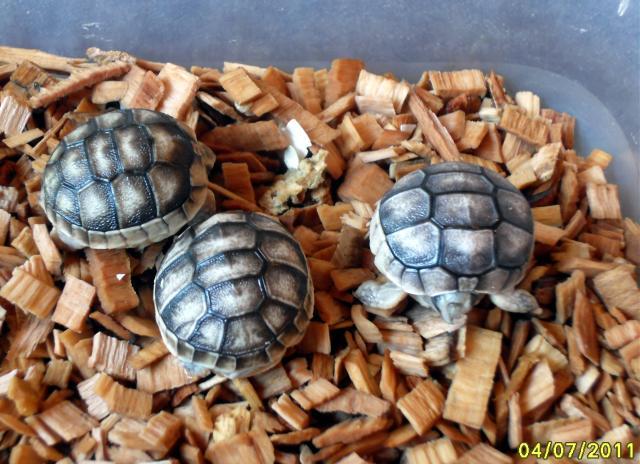Hi
Altering temperatures with birds does not change the sex and I would never advocate changing temperatures to try and do so. As I said it is the ovum of the female the pre-determines the sex of the chick. It will either have a Z chromosome (and be male) or a W chromosome and be female. So the shape and size of the egg does not alter the inherited sex chromosomes. The layers of albumen are added and finally the membranes and shell which may change the size and shape of the laid egg. However these physical changes will not influence the actual ovum's gene compliment.
With the tortoises its different and the incubating temperature directly influences the sex of the youngster. However Gypsy07 is correct in stating that extremes of temperatures can have detrimental effects on the developing embryo. There are fine parameters to work within.
Around 26 - 27C all the babies will generally be males.
Around 28 - 30C and the babies are mixed sexes.
Around 30-32C and the babies are generally females.
Its very usueful for breeding endangered species and especially as the tortoises need to be around 5-6 years before you can sex them! I've not had problems with erring on the low side for males but nearer to 33C then physical defects begin to occur such as extra shell plates etc which lead to shell deformities.
This year we incubated at 31.5 - 32C to select for females as we wanted to increase our breeding stock of female tortoises.

Hatchling Marginated Tortoises incubated for females.
Now with Divining Rods I have seen it done sucessfully and indeed saved hundreds of pounds by somebody tacking our burst water pipe so my greatest respect to that skill. However I have yet to be convinced about the use use of crytals, pendulums etc on sexing unborn animals. I've seen it done, heard many woman tell me about the sex of the unborn baby only to have the opposite result when the baby finally came along!
Pete

Altering temperatures with birds does not change the sex and I would never advocate changing temperatures to try and do so. As I said it is the ovum of the female the pre-determines the sex of the chick. It will either have a Z chromosome (and be male) or a W chromosome and be female. So the shape and size of the egg does not alter the inherited sex chromosomes. The layers of albumen are added and finally the membranes and shell which may change the size and shape of the laid egg. However these physical changes will not influence the actual ovum's gene compliment.
With the tortoises its different and the incubating temperature directly influences the sex of the youngster. However Gypsy07 is correct in stating that extremes of temperatures can have detrimental effects on the developing embryo. There are fine parameters to work within.
Around 26 - 27C all the babies will generally be males.
Around 28 - 30C and the babies are mixed sexes.
Around 30-32C and the babies are generally females.
Its very usueful for breeding endangered species and especially as the tortoises need to be around 5-6 years before you can sex them! I've not had problems with erring on the low side for males but nearer to 33C then physical defects begin to occur such as extra shell plates etc which lead to shell deformities.
This year we incubated at 31.5 - 32C to select for females as we wanted to increase our breeding stock of female tortoises.

Hatchling Marginated Tortoises incubated for females.
Now with Divining Rods I have seen it done sucessfully and indeed saved hundreds of pounds by somebody tacking our burst water pipe so my greatest respect to that skill. However I have yet to be convinced about the use use of crytals, pendulums etc on sexing unborn animals. I've seen it done, heard many woman tell me about the sex of the unborn baby only to have the opposite result when the baby finally came along!
Pete




